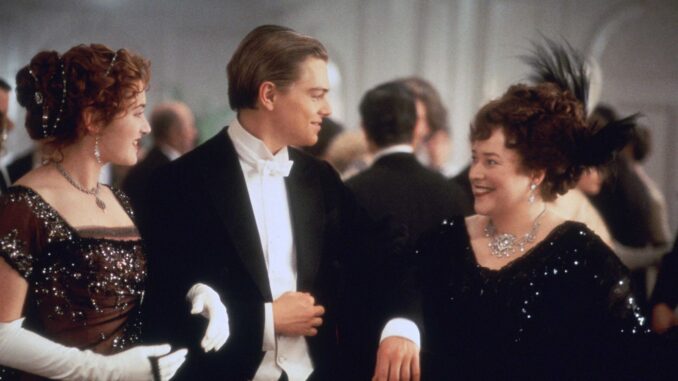
The Real Stories That Inspired Titanic’s Most Iconic Characters
James Cameron's Titanic is more than just a love story; it is a meticulously crafted historical drama that plunges viewers into the heart of one of the 20th century's most enduring tragedies. While the sweeping romance between the fictional Jack Dawson and Rose DeWitt Bukater forms the narrative core, the film's enduring power is significantly amplified by its grounded portrayals of real individuals and the societal archetypes they represented. Cameron masterfully wove historical accuracy into his dramatic tapestry, allowing the true stories of courage, class, and human frailty to give a profound weight to his fictionalized world.
The most iconic characters, Rose and Jack, are undoubtedly products of Cameron's imagination, yet they are deeply rooted in the social realities of 1912. Rose DeWitt Bukater, trapped in a gilded cage of Edwardian aristocracy, embodies the plight of many upper-class women. Her forced engagement to the odious Cal Hockley mirrors the common practice of arranged marriages within the elite, where financial stability and social standing often trumped personal happiness. Rose's desire for freedom, her longing to escape the suffocating expectations of her class, is a narrative echo of the burgeoning feminist ideals bubbling beneath the surface of early 20th-century society. She is not one woman, but a composite of the stifled dreams and rebellious spirits of countless women of her era. Similarly, Jack Dawson, the free-spirited artist from steerage, represents the aspirations of the working class and the American dream of upward mobility. He is the antithesis of the rigid class structure, offering Rose a glimpse of a world beyond her societal confines – a world where passion and individual liberty hold sway. Their love story, therefore, becomes a potent symbol of class conflict and the universal yearning for genuine connection amidst societal constraints.
While Rose and Jack provide the romantic heartbeat, other iconic figures are direct reflections of those who sailed on the ill-fated liner, grounding the drama in stark reality. Perhaps the most celebrated of these is Margaret "Molly" Brown, portrayed with boisterous charm by Kathy Bates. Far from being a mere caricature, the film's "unsinkable" Molly Brown perfectly captures the spirit of the real woman. A self-made millionaire from Colorado, she embodied the American "new money" ethos, often clashing with the more established East Coast elite. Her defiance of social norms, her outspoken nature, and her unwavering courage were all historically accurate. The film famously depicts her trying to convince her lifeboat to return for survivors, a testament to her real-life heroism and compassion in the face of overwhelming tragedy. Molly Brown's character is a vibrant illustration of resilience, challenging the rigid class boundaries and proving that true nobility lay not in birth, but in character.
Another pivotal real-life figure is Thomas Andrews Jr., the ship's designer, brought to life with quiet dignity by Victor Garber. Andrews was indeed a man of immense integrity and dedication. The film portrays him as a deeply honorable man who, in the final hours, wandered the ship, inspecting the damage, advising passengers, and quietly accepting his fate. His line, "I am so very sorry, Rose," delivered as he stood by the grand fireplace, speaks volumes about his sense of responsibility and his profound grief for his "unsinkable" masterpiece and the lives lost with it. Andrews' decision to go down with his ship, a common and noble act for a captain or designer of the era, underscores his unwavering commitment to his creation and its passengers, making him a poignant symbol of duty and sacrifice.
In stark contrast to Andrews' selflessness stands J. Bruce Ismay, the chairman and managing director of the White Star Line, depicted by Jonathan Hyde. While historical accounts of Ismay's actions are debated, Cameron's portrayal leans heavily into the public perception that emerged after the disaster: a cowardly corporate titan who secured his own place on a lifeboat while thousands perished. The film shows him pressuring Captain Smith to increase the ship's speed and later sneaking into a lifeboat meant for women and children. This portrayal, while perhaps an embellishment of historical ambiguity, serves a crucial illustrative purpose. Ismay becomes the embodiment of corporate hubris, unchecked ambition, and the morally bankrupt aspects of the Gilded Age's industrial titans, providing a powerful foil to the selfless acts of others.
Finally, the small but profoundly impactful presence of the ship's musicians, led by violinist Wallace Hartley, offers one of the most poignant real-life inspirations. Their unwavering dedication to their craft, famously playing hymns like "Nearer, My God, to Thee" as the ship sank, is one of the most enduring legends of the Titanic. Cameron's film immortalizes this incredible act of bravery and solace, depicting the band continuing their performance even as the deck tilted and chaos reigned around them. Their sacrifice, playing to calm frightened passengers and provide a final shred of dignity amidst the unfolding catastrophe, serves as a powerful testament to the human spirit's capacity for courage and beauty in the face of unimaginable horror.
In Titanic, James Cameron achieved more than just a blockbuster; he crafted a historical epic imbued with a profound sense of humanity. By weaving together the fictional narrative of Rose and Jack with the verifiable lives and archetypes of real individuals, he created a film that resonates on multiple levels. The characters, both imagined and historically inspired, serve as illustrative lenses through which to examine themes of class, love, sacrifice, and the indomitable spirit of those who faced the ultimate test. It is this masterful blend of factual homage and narrative invention that ensures Titanic's characters, and their real-life counterparts, continue to captivate and educate audiences, ensuring the stories of that fateful night live on.
